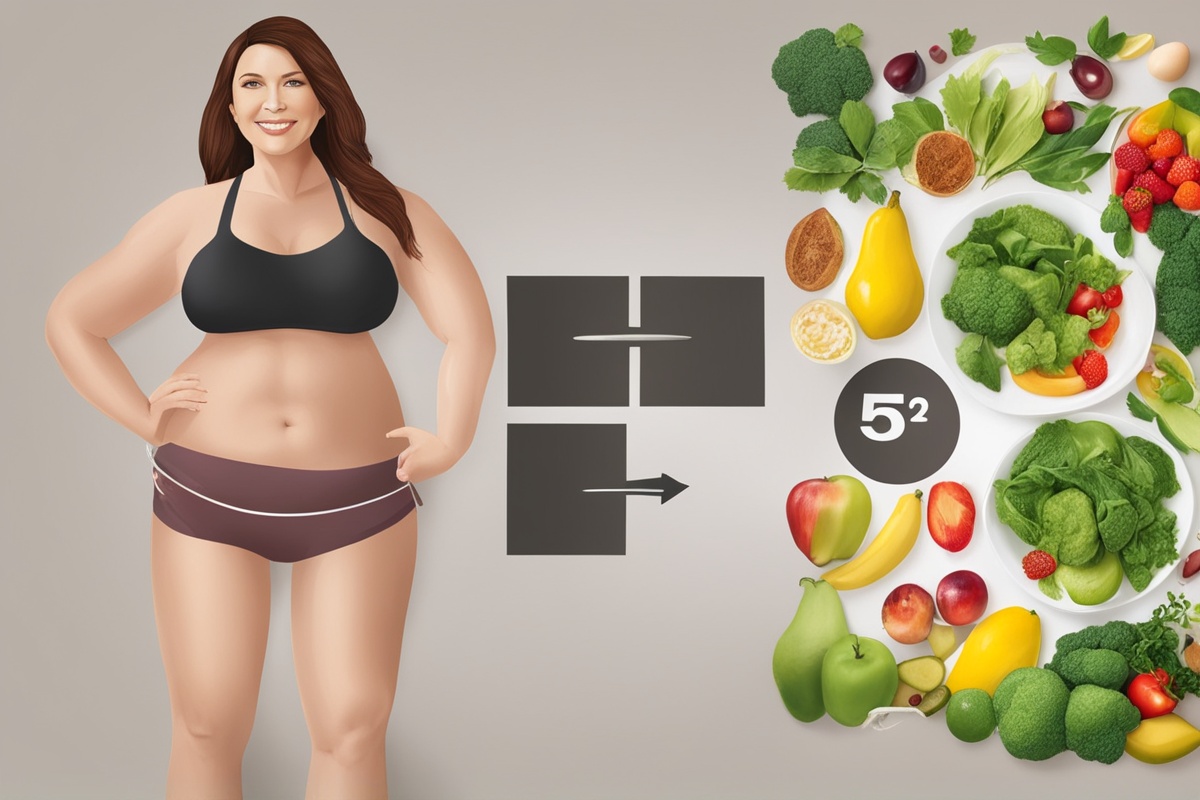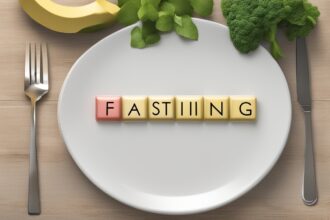Hey there! If you’re on a journey to shed some extra pounds, you’ve likely come across countless diets and quick fixes promising miraculous results. But let’s be real—sustainable weight loss isn’t about gimmicks; it’s about finding a method that works for your body and lifestyle. Today, I’m diving deep into weight loss tips with a special focus on fasting, a practice that’s gained massive popularity for its simplicity and science-backed benefits. Whether you’re new to fasting or a seasoned pro, this guide will arm you with practical advice, insights grounded in research, and actionable steps to help you reach your goals. Let’s explore how fasting can be a game-changer for weight loss and overall health!
What Is Fasting, and How Does It Help with Weight Loss?
fasting isn’t just about skipping meals—it’s a structured eating pattern where you cycle between periods of eating and abstaining from food. Popular methods include intermittent fasting (IF), like the 16:8 approach (fast for 16 hours, eat during an 8-hour window), and longer fasts like 24-hour or 5:2 plans (eating normally five days a week and restricting calories on two). But how does this tie into effective weight loss tips? Simple: fasting helps create a calorie deficit, which is the cornerstone of losing weight. By reducing your eating window, you’re likely to consume fewer calories without even trying (Fung & Moore, 2016).
Beyond calorie control, fasting triggers fascinating changes in your body. When you fast, insulin levels drop, prompting your body to tap into stored fat for energy—a process called lipolysis. Plus, fasting boosts levels of human growth hormone (HGH), which aids fat burning and muscle preservation (Ho et al., 1988). It’s not just a trend; it’s a metabolic reset that can supercharge your weight loss efforts when done right. Let’s break down why this approach stands out among other weight loss strategies.
The Science Behind Fasting and Weight Loss
Let’s get a bit nerdy for a moment because understanding the “why” behind fasting can keep you motivated. When you eat, your body uses glucose from food as its primary energy source. But during a fast, after about 12–14 hours without food, glucose stores (glycogen) in your liver start to deplete. That’s when your body shifts gears into ketosis, burning fat for fuel instead (Anton et al., 2018). This metabolic switch is a key reason fasting is such a powerful tool among weight loss tips.
Studies also show that fasting can improve insulin sensitivity, meaning your body becomes better at managing blood sugar levels, reducing fat storage over time (Barnard et al., 2019). And here’s a bonus: fasting may lower inflammation and oxidative stress, which are often linked to obesity and metabolic disorders (Patterson & Sears, 2017). While fasting isn’t a magic bullet, the science suggests it’s a sustainable way to tip the scales in your favor—pun intended! Now, let’s get into some practical ways to make fasting work for you.
Practical Weight Loss Tips Using Fasting
Ready to put fasting into action? Here are some hands-on weight loss tips tailored for beginners and seasoned fasters alike. The goal isn’t to starve yourself but to build a routine that feels manageable and fits your life. I’ve tried these myself, and trust me, starting small makes all the difference.
- Start with a Simple Fasting Schedule: If you’re new, try the 12:12 method—fast for 12 hours overnight and eat during the other 12. Gradually work up to 16:8 as your body adjusts.
- Stay Hydrated: Drink plenty of water during fasting windows. Dehydration can mimic hunger, so keep a bottle handy to curb unnecessary cravings.
- Focus on Nutrient-Dense Foods: When you do eat, prioritize protein, healthy fats, and fiber-rich veggies to stay full longer and avoid overeating.
- Listen to Your Body: If you feel dizzy or overly fatigued, break your fast. Weight loss shouldn’t come at the cost of your well-being.
These weight loss ideas are just the starting point. The beauty of fasting is its flexibility—you can tweak it to match your schedule, whether you’re a busy parent or a night owl. But remember, consistency beats perfection every time.
Common Mistakes to Avoid While Fasting for Weight Loss
I’ll be honest—fasting isn’t always smooth sailing, especially when you’re starting out. I’ve made plenty of slip-ups myself, like overeating during eating windows or expecting overnight results. Let’s talk about pitfalls to dodge so your journey with these weight loss tips stays on track.
- Overcompensating with Calories: It’s tempting to “reward” yourself after a fast with a huge meal, but this can erase your calorie deficit. Plan balanced meals instead.
- Ignoring Sleep and Stress: Poor sleep and high stress can spike cortisol, a hormone linked to weight gain. Fasting works best with a holistic approach (Walker et al., 2007).
- Skipping Exercise: Light activity like walking during fasting can boost fat burning, so don’t skip movement just because you’re not eating.
- Expecting Instant Results: Weight loss takes time. Fasting is a tool, not a miracle—give it a few weeks to see changes.
- Not Consulting a Professional: If you have medical conditions like diabetes, talk to a doctor before starting any fasting regimen.
Avoiding these mistakes can make fasting one of the most effective weight loss methods you’ll ever try. It’s all about balance and patience—two things I had to learn the hard way!
Combining Fasting with Other Weight Loss Strategies
While fasting is powerful on its own, pairing it with other weight loss tips can amplify your results. Think of fasting as the foundation of your plan, with these additional habits as the building blocks. For instance, tracking your macros (protein, carbs, fats) during eating windows ensures you’re not just cutting calories but also fueling your body right. I’ve found that a high-protein diet post-fast keeps me satisfied and helps preserve muscle mass, which is crucial for a revved-up metabolism.
Exercise is another game-changer. While intense workouts during fasting hours might not feel great, low-impact activities like yoga or a brisk walk can enhance fat loss without draining you. Plus, strength training a couple of times a week helps maintain muscle, ensuring you’re losing fat, not lean tissue (Trexler et al., 2014). And don’t underestimate the power of mindset—keeping a journal to track your fasting hours, meals, and emotions can reveal patterns and keep you accountable. These weight loss techniques work hand-in-hand with fasting for a well-rounded approach.
Who Should (and Shouldn’t) Try Fasting for Weight Loss?
fasting isn’t a one-size-fits-all solution, even if it’s among the top weight loss tips out there. For many, it’s a safe and effective way to manage weight and improve metabolic health. Adults who are generally healthy and looking to lose a moderate amount of weight often see great results with intermittent fasting. It’s also been linked to benefits like better blood sugar control and reduced risk of heart disease in some studies (Patterson & Sears, 2017).
However, fasting isn’t for everyone. Pregnant or breastfeeding women, individuals with eating disorders, or those with certain medical conditions like type 1 diabetes should steer clear unless under strict medical supervision. Kids and teens also need consistent nutrition for growth, so fasting isn’t typically recommended for them. If you’re unsure, a quick chat with your healthcare provider can clarify whether fasting fits into your weight loss plans. Safety first, always!
As we wrap up, I want to remind you that weight loss is a deeply personal journey, and fasting is just one of many tools in the toolbox of weight loss tips. It’s worked wonders for me by simplifying my eating habits and helping me tune into my body’s hunger cues. But the real magic happens when you pair fasting with sustainable habits—eating whole foods, moving your body, and being kind to yourself on the tough days. Start small, celebrate every win (even the non-scale ones!), and remember that consistency is your best friend. Got questions or personal fasting stories? Drop them in the comments—I’d love to hear how you’re making these weight loss strategies work for you!
References
- Anton, S. D., Moehl, K., Donahoo, W. T., Marosi, K., Lee, S. A., Mainous, A. G., … & Mattson, M. P. (2018). Flipping the metabolic switch: Understanding and applying the health benefits of fasting. Obesity, 26(2), 254–268. https://doi.org/10.1002/oby.22065
- Barnard, N. D., Levin, S. M., & Yokoyama, Y. (2019). A systematic review and meta-analysis of changes in body weight in clinical trials of vegetarian diets. Journal of the Academy of Nutrition and Dietetics, 119(6), 954–962. https://doi.org/10.1016/j.jand.2019.01.015
- Fung, J., & Moore, J. (2016). The complete guide to fasting: Heal your body through intermittent, alternate-day, and extended fasting. Victory Belt Publishing.
- Ho, K. Y., Veldhuis, J. D., Johnson, M. L., Furlanetto, R., Evans, W. S., Alberti, K. G., & Thorner, M. O. (1988). Fasting enhances growth hormone secretion and amplifies the complex rhythms of growth hormone secretion in man. Journal of Clinical Investigation, 81(4), 968–975. https://doi.org/10.1172/JCI113450
- Patterson, R. E., & Sears, D. D. (2017). Metabolic effects of intermittent fasting. Annual Review of Nutrition, 37, 371–393. https://doi.org/10.1146/annurev-nutr-071816-064634
- Trexler, E. T., Smith-Ryan, A. E., & Norton, L. E. (2014). Metabolic adaptation to weight loss: Implications for the athlete. Journal of the International Society of Sports Nutrition, 11(1), 7. https://doi.org/10.1186/1550-2783-11-7
- Walker, M. P., Stickgold, R., Alsop, D., Gaab, N., & Schlaug, G. (2007). Sleep-dependent motor memory plasticity in the human brain. Neuroscience, 143(4), 937–942. https://doi.org/10.1016/j.neuroscience.2006.08.022






